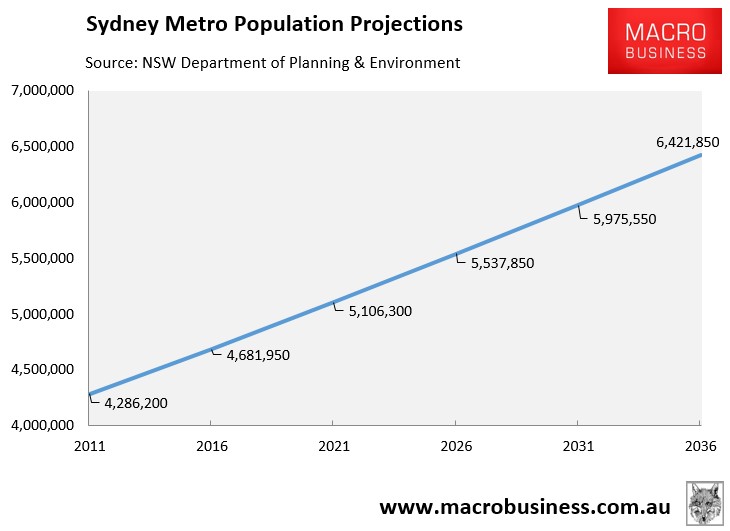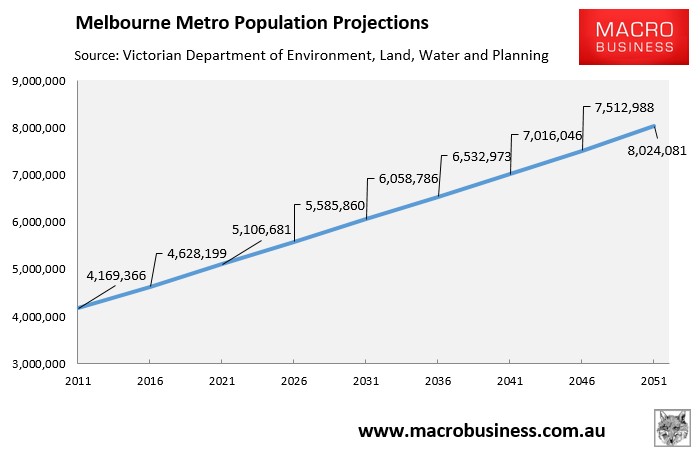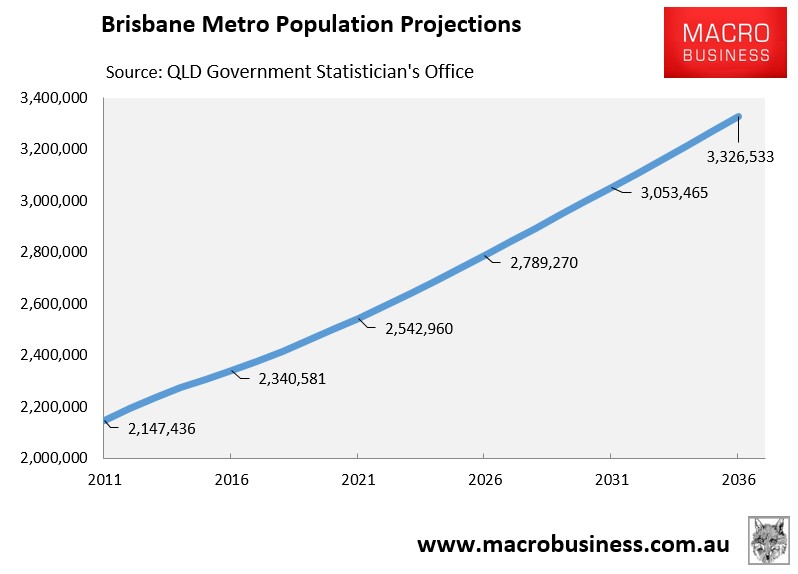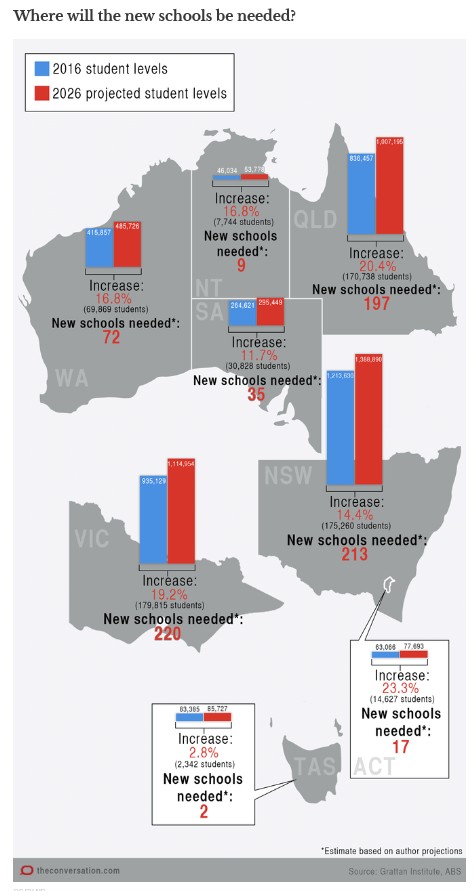The lack of planning and foresight to cope with the never-ending population (immigration) influx into Australia’s big cities never ceases to amaze. Over recent months, we have received numerous reports about overcrowding across schools in Sydney, Melbourne and Brisbane.
Today, The ABC has published another detailed report on how the explosion in the number of high-rise apartments across our capital cities is dramatically driving up student enrollments, resulting in “jam-packed” public schools:
The overcrowding is due to the growing number of families with school-aged children choosing to live in smaller dwellings close to the CBD… State governments did not anticipate the trend and are now playing catch-up by installing demountable classrooms on school ovals and quadrangles to accommodate the extra students until new permanent facilities are built.
Brisbane State High School — already the largest public high school in the country — is under enormous pressure, as thousands of apartments spring up in suburbs within its inner city catchment.
In just four years, the number of students there has jumped from 2,269 to 3,145, meaning the school is now well over capacity, despite the recent addition of 40 extra classrooms.
A draft report on enrolment pressures at the school shows the problem is only going to get worse.
The report, which was produced by the consultancy firm KPMG and has not been made public, said the school will have to accommodate another 1,000 students in the next decade.
Students who spoke to ABC RN’s Background Briefing program did not believe the school could cope with such an increase, arguing the environment there already resembles morning peak hour.
“I thought traffic was only for cars until I came to this school,” one student said.
“It’s sort of like rush-hour time. It’s really jam-packed, people shoving and pushing,” said another…
As recently as late last year, Queensland’s education minister, Kate Jones, was still receiving advice downplaying the link between increased development in Brisbane’s inner city and school overcrowding…
These same overcrowding issues are afflicting Sydney, where a decision to close a number of schools more than a decade ago is now coming back to bite the NSW Government…
Now enrolments at the surrounding Bourke St and Erskineville primary schools are booming and there are concerns about overcrowding.
“It was clearly a huge mistake,” said public education advocate and author, Jane Caro… Caro said with inner-city public schools now bursting at the seams.
…in trying to predict future student numbers, the education department was not accounting for unborn children, immigration rates, and the number of families living in apartments, even though all that data was readily available…
Over the past decade, Sydney’s population grew by around 800,000 people (equivalent to 2 Canberra’s), Melbourne’s grew by around 1 million (2.5 Canberra’s), and Brisbane’s by around 450,000 (just over 1 Canberra).
Official population projections also have Sydney’s population growing by 1,650 people per week (87,000 people per year) over the next 20 years – representing total population growth of 1.74 million people, which is the equivalent of 4.5 Canberra’s:

Melbourne’s population is projected to grow by 1,870 people per week (97,000 people a year) over the next 35 years – adding an additional 3.4 million people or the equivalent of 9 Canberra’s or 2.5 Adelaide’s:

Whereas Brisbane’s population is projected to grow by 950 people per week (49,300 people per year) over the next 20 years – representing total population growth of just under 1 million people, which is the equivalent of 2.5 Canberra’s:

The overcrowding of Australia’s schools is just one area of collateral damage from Australia’s mass immigration program. To this you can add worsening traffic congestion, deteriorating housing affordability, and an overall erosion of public services and livability.
Back in February 2016, Peter Goss, School Education Program Director at the Grattan Institute, penned an excellent article in The Conversation assessing the upcoming shortage of schools across Australia’s capital cities as the nation’s population balloons. This article estimated that the number of school students would balloon by 650,000 (17%) by 2026, which would require the building of an additional 400 to 750 new schools (up from 9,400 currently):

New South Wales (mostly Sydney) would require an additional 213 schools to cope with an additional 14% of students over the next decade, whereas Victoria (mostly Melbourne) would require an additional 220 schools to cope with an additional 19% of students, and Queensland (mostly Brisbane) would require an additional 197 schools to cope with an additional 20% of students.
Inner city areas would be worst affected by the schools shortage, according to Grattan:
In the inner city, the big issue is the cost and scarcity of land… Governments have been much worse at planning for the booming number of inner-city children…
Worse is to come, especially in Melbourne. Melbourne’s five most central local government areas will each see a 30% to 60% increase in student numbers over the next decade… Inner-city parents in urban redevelopment zones are the most likely to have problems getting their children into a government school.
All of this, yet again, highlights Australia’s dysfunctional population ponzi in action. And to make matters even worse, the Turnbull Government recently relaxed visa rules to allow 6 year-old foreign students and their guardians visa entry into Australia’s primary schools, thus adding to the demand pressures.
Running a mass immigration program without adequate planning and investment means incumbent residents will spend more time lost in traffic, spend more on (smaller) housing, receive less public services (e.g. health and education), and experience overall lower living standards.
The equation is that simple, but largely ignored by our negligent politicians, policy makers and mainstream media.

